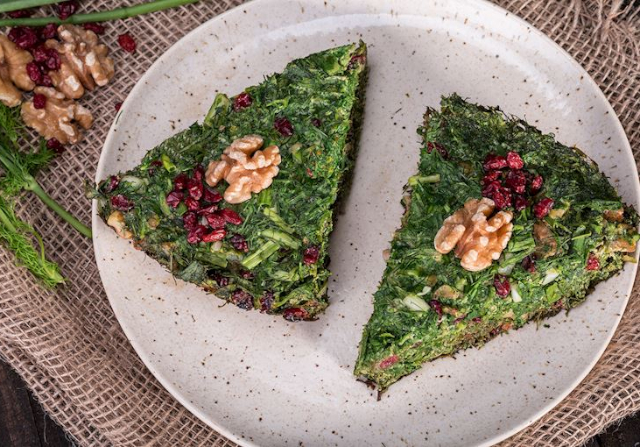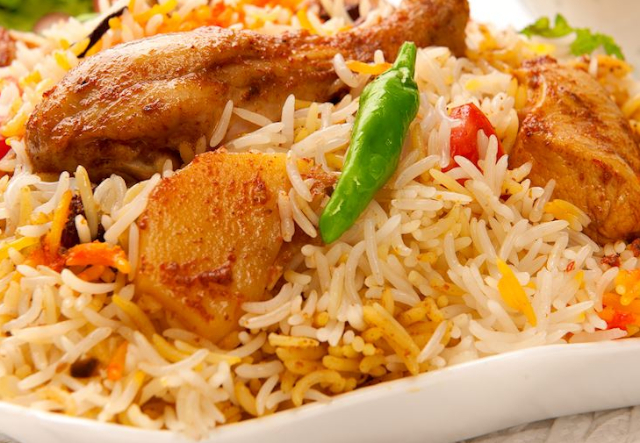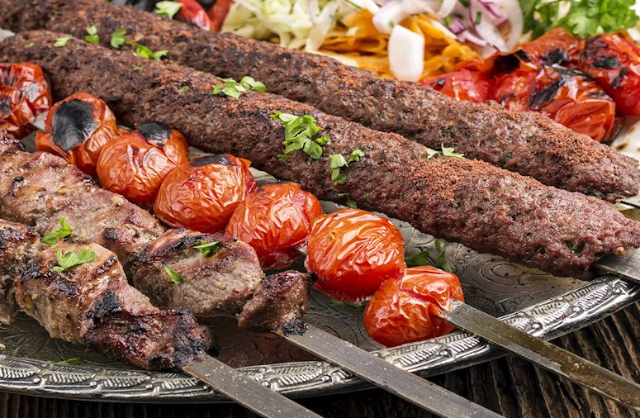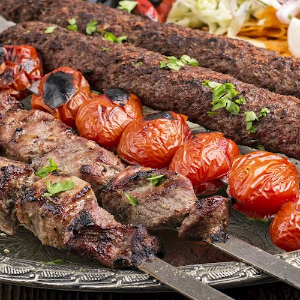Iran is the largest remaining part of what was once called Persia – the great, historic Islamic empire of the Middle East. A land of mountains, deserts and lush coastlines, it boasts a vast and varied culinary tradition. Movie fans will be familiar with the legendary Persian tradition of gracious hospitality…
 Kuku sabzi: A versatile Iranian dish that can be eaten
Kuku sabzi: A versatile Iranian dish that can be eaten
hot or cold; as a main, a snack or an appetizer.
Harken back to The Spy Who Loved Me:
“May a poor traveller enter this manificent abode?” James Bond asks in a lowered voice as he sticks his head into the Persian Sheik’s tent.
“This lowly Bedouin is honoured to offer your exalted excellency the hospitality of his humble home,” replies Sheikh Hosein, in level tones, with a rather menacing look.
Or something like that. Anyway, it turns out Hosein is an old Oxford chum of Bond’s who happens to be the son of a fabulously wealthy Middle Eastern Potentate. And an MI6 ‘distinguished colleague’.
Yes, it makes what some now would call inappropriate fun of the Persian culture. But it’s a true reflection of the famous tradition. And at the core of that tradition (after offering a bed for the night) is the offer to share food.
An encyclopedia of styles and flavours
Iranian cuisine is a veritable encyclopedia of Middle Eastern and Near Asian cuisines. It shares traditions with India, Pakistan and Afghanistan on the east, Turkmenistan, Azerbaijan and Armenia on the north, and Turkey and Iraq on the west. It’s terrain consists mainly of mountains and desert, with a lush green crescent along the southern edge of the Caspian Sea. With coastlines on the Arabian Sea and the Persian Gulf as well, it also boasts a rich and varied maritime heritage.
Iran’s culture has been enriched by a couple of thousand years of visits by travellers passing through, to and from other exotic places, but it’s based in the native Bedouin traditions. This means a lot of kababs and stews, mountains of rice, and a whole bakeshop of different breads, just to start!
On our menu today:
Kuku sabzi: The closest relatives in other cuisines of this popular Iranian dish are probably the Omelet or the Frittata. This one, however, is mainly composed of fresh herbs bound together with lightly-beaten eggs. As so often occurs with popular dishes in all cuisines, Kuku is really more of a style or technique rather than a set-in-stone recipe. Different cooks may use different herbs and spices, and incorporate different additions, including meat. It can be eaten hot or cold; as a main, a snack or an appetizer.
Pilaf: Of course, Iran has its own version of that Middle Eastern staple, Pilaf. In Iran, it’s served either a main or a side, accompanied by salad and yogurt when a main. Iranian Pilaf is based on rice with combined with meat, vegetables, dried fruits, and spices, simmered together in a flavored broth.
Zereshk polo: This elegant Rice dish is traditionally coloured and flavoured with Saffron, but Turmeric can be substituted if your purse doesn’t extend that far. The crowning glory of Zereshk Polo is a compote of Zereshk Berries – deep red berries that might remind you of Red Currents. The dish is usually served with Chicken but may also accompany Lamb.
Biryani: This is perhaps one of the best-known Iranian dishes. It’s also a favourite in India, Pakistan and Afghanistan, but native to Persia, from which traders and travellers took it home a thousand years ago.

‘Biryani’ is another name that applies to a whole class of dishes, all of which are based on Basmati Rice and spices baked en casserole with meat, eggs, or vegetables. Depending on the region, dried fruits, nuts, and yogurt are sometimes added.
Tahchin: Tahchin is basically a Rice Cake incorporating Chicken Breast Fillets, and flavoured with rice, yogurt, saffron and egg. It can also be made with vegetables, fish, or meat. Tahchin is really more of a style or technique rather than a set-in-stone recipe. You must really use Basmati Rice for your Tahchin to turn out right!
Kebabs: This may be the most popular style of meat preparation in Iran. In all cases, the meat, cut in strips or bite-sized pieces, is skewered, marinated and grilled.
 Kebabs: Meat, cut in strips or bite-sized pieces, is skewered, marinated and grilled.
Kebabs: Meat, cut in strips or bite-sized pieces, is skewered, marinated and grilled.
Any meat can be used, even ground meats, carefully formed (like free-form sausages) around the skewers. Marinades vary from meat to meat, and region to region. It’s easy and quick (once the marination is complete), and goes with any Iranian side(s) you like. Think ‘week-night supper’.
Khoresht-e fesenjan: This stew is traditionally made from Duck, but Chicken or Lamb versions are also fairly common. It’s even made with Fish in the north, along the Caspian Sea. The sauce features the exotic ingredients such as Pomegranate Syrup and Ground Walnuts, and is simmered for hours to develop its unique flavour and rich, thick consistency. It’s dark brown colour is also unique among Iranian dishes.
Khoresht-e ghormeh sabz: This intriguing stew is popular all over Iran, and can be made with any kind of stewing meat you like. It calls for lots of Onions, Parsley, Cilantro, Dried Limes and Fenugreek, all of which must be fresh-picked and fragrant. It might use any of several types of beans or potatoes as the starchy component, depending on the part of the country you’re dining in. There’s nothing else quite like Khoresht-e ghormeh sabz – in Iran or anywhere!
Khoresht-e gheimeh: Here’s another Stew, one that combines meat with pulses. Again, Dried Limes are featured, along with Saffron or Turmeric. The starchy component is usually Yellow Split Peas. The dish is always topped with Fried Potatoes. And the whole glorious mixture is served beside Rice. Even without the meat, the peas and rice together would provide a complete nutritional protein complex. This is real ‘stick-to-the-ribs’ fare!
This is just the smallest sample of styles and dishes popular in – and in many cases, unique to – Iran. Tomorrow, we’ll look at Iranian desserts. For a culture famed for their austerity, Iranians certainly do love their sweets! And on Wednesday, we’ll peek into the Iranian traditional bread basket!
~ Maggie J.

